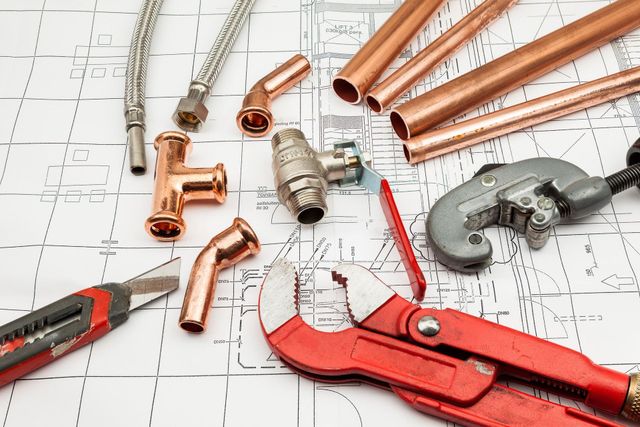Sustainable Water Systems: Crafting an Eco-Friendlier Home
Sustainable Water Systems: Crafting an Eco-Friendlier Home
Blog Article
On this page further down you can locate some superb details in regards to Eco-Friendly Plumbing Practices for a Greener Home.

Introduction
In today's globe, sustainable living is becoming significantly essential. One area where house owners can make a considerable influence is via environmentally friendly pipes remedies. By taking on environmentally mindful techniques, homes can minimize their water and energy intake while contributing to a much healthier earth.
Greywater Systems
Greywater describes delicately used water from resources such as showers, sinks, and cleaning machines. Rather than allowing this water go to waste, greywater systems reuse it for non-potable usages such as landscape watering and toilet flushing. By executing a greywater system, home owners can preserve fresh water sources and reduce stress on local wastewater therapy centers.
Rain Harvesting
Rain collecting entails accumulating and saving rain for numerous objectives, consisting of watering, bathroom flushing, and laundry. Rainwater harvesting systems typically consist of a collection surface area (such as a roof covering), seamless gutters, downspouts, and tank. By harvesting rain, home owners can minimize their reliance on municipal water resources and save freshwater sources.
Solar Water Heaters
Conventional hot water heater count on fossil fuels or power to warm water, adding to carbon discharges and power usage. On the other hand, solar water heaters make use of sunlight to warmth water, offering a sustainable and environmentally friendly option. By using solar energy, house owners can decrease their energy expenses and reduce their carbon impact.
Eco-friendly Pipeline Products
Conventional pipes materials such as copper and PVC can have unfavorable ecological influences during production and disposal. Nonetheless, there are lasting alternatives available, such as recycled steel, cross-linked polyethylene (PEX), and high-density polyethylene (HDPE). These eco-friendly pipeline products supply resilience, durability, and minimized environmental effect.
Water-Efficient Fixtures
Conventional fixtures frequently waste water needlessly. Nonetheless, contemporary low-flow bathrooms, faucets, and showerheads are designed to decrease water use without compromising performance. These components can substantially decrease household water consumption, leading to reduced water bills and a lowered ecological footprint.
Energy-Efficient Devices
In addition to water-efficient components, energy-efficient appliances can better decrease a house's environmental impact. High-efficiency washing makers and dishwashers utilize much less water and energy per cycle, assisting to preserve resources and lower energy costs. When searching for devices, look for ENERGY STAR ® licensed versions for maximum efficiency.
Smart Water Administration Equipment
Breakthroughs in technology have made it simpler than ever to keep an eye on and enhance water use in the home. Smart water administration systems utilize sensing units and data analytics to track water usage in real-time, identify leakages, and give insights for preservation. By carrying out clever water management services, property owners can reduce waste and take full advantage of effectiveness.
Health Conveniences
Along with environmental advantages, green plumbing can also add to improved interior air high quality and health. By utilizing non-toxic products and minimizing chemical direct exposure, property owners can develop a healthier living setting for themselves and their family members.
Government Rewards
Several governments use financial rewards to urge homeowners to embrace green pipes practices. These rewards might consist of discounts, tax credit reports, and low-interest loans for energy-efficient upgrades. By making the most of these programs, house owners can make green renovations extra affordable and accessible.
Cost Factors to consider
While green pipes choices may have higher ahead of time expenses than standard alternatives, they often give lasting cost savings through lowered water and energy bills. In addition, numerous federal governments use incentives such as discounts and tax credits for green upgrades, helping to counter initial costs.
Installment and Upkeep
Appropriate installment and routine maintenance are important for making certain the efficiency and durability of environment-friendly plumbing systems. It is very important to hire competent specialists to set up and service these systems to avoid problems and make best use of efficiency. Routine maintenance tasks such as checking for leaks and cleaning filters can also help prevent issues and optimize efficiency.
Ecological Advantages
The ecological benefits of environment-friendly plumbing are significant. By conserving water and power, home owners can minimize their carbon footprint and minimize their influence on natural deposits. Furthermore, eco-friendly pipes methods can help shield environments and preserve biodiversity for future generations.
Verdict
To conclude, eco-friendly pipes options supply various advantages for property owners and the setting alike. By investing in water-efficient components, greywater systems, rain harvesting, solar water heaters, eco-friendly pipeline materials, energy-efficient home appliances, clever water management systems, and other lasting remedies, households can decrease their ecological impact, reduced their utility bills, and contribute to a healthier world for future generations.
Eco-Friendly Plumbing: Transform Your Home with Sustainable Plumbing Options
Understanding Eco-Friendly Plumbing System
At its core, eco-friendly plumbing is all about minimizing water and energy consumption in your home. It’s a green plumbing revolution changing how we think about our water supply and energy use. It offers many options for homeowners, whether you’re upgrading your home or dealing with an older home. By making these changes, you can help the environment, save money on your water and electricity bills, and create a greener, more sustainable home. So, read on to learn how to use eco-friendly plumbing solutions today.
Low Flow Fixtures: A Key to Water Conservation
One of the cornerstones of eco friendly plumbing is the use of low-flow fixtures. These fixtures, which include faucets, showerheads, and toilets, are designed to use much less water than their traditional counterparts. For instance, low-flow showerheads use significantly less water per minute than a standard showerhead without compromising the quality of your shower.
Low-flow toilets are another excellent example of water-saving options. They use fewer gallons of water per flush, making them a more water-efficient choice. By reducing your water usage, these fixtures contribute to a greener home and substantial savings on your water bills.
Maintaining an Eco-Friendly Plumbing System
Another critical aspect of eco-friendly plumbing is addressing water leaks promptly. A small water leak can waste much water over time, leading to water damage and increased water bills.
Regularly checking your plumbing system and fixing leaks can help save gallons of water and reduce your water bills.
Tankless Water Heaters: Hot Water When You Need It
Tankless water heaters, a popular choice in eco-friendly plumbing, are a revolutionary way to heat water in your home. Unlike traditional water heaters that constantly heat a tank of water, tankless water heaters operate on an on-demand basis. This means they only use energy when you need hot water, making them a more energy-efficient option.
This innovative approach to heating water can significantly reduce the energy your home uses. Traditional water heaters constantly work to keep a water tank heated, which requires much energy. In contrast, tankless water heaters heat water when needed, reducing energy consumption and saving money on energy bills. This is a great way to make your home more eco-friendly and embrace an eco-friendly lifestyle.
Insulating Water Pipes: Maximizing Energy Efficiency
Insulating your water pipes is another effective method in eco-friendly plumbing. Proper insulation can prevent heat loss, ensuring your hot water remains hot as it travels from your water heater to your faucet or showerhead. This means your water heater won’t have to work as hard to heat the water, thus saving energy.
For instance, insulating your water pipes can further enhance energy efficiency if you’re using a tankless water heater, which heats water only when needed. This is because the insulation reduces the heat lost as the hot water travels through the pipes, meaning the heater uses less energy to bring the water to the desired temperature.
Dual Flush Toilets: A Water Saving Option
Dual flush toilets are another excellent eco-friendly plumbing option that can help you save water. These toilets offer two flush options: one for liquid waste and one for solid waste. The liquid waste option uses less water than solid waste, allowing you to choose the water flow for each flush based on your needs.
Using less water for liquid waste, dual flush toilets can save thousands of gallons per year compared to traditional bathrooms. This can lead to significant savings on your water bills and contribute to a more sustainable and eco-friendly home.
Touchless Faucets: Saving Water With a Wave of Hand
Touchless faucets are a modern, eco-friendly plumbing option that can help reduce unnecessary water use. These faucets use motion sensors to turn on and off, meaning they only use water when you need it.
This can be particularly useful in the kitchen, where your hands might be full or dirty. Instead of leaving the water running while you handle food or clean dishes, the faucet will only run when your hand comes near the sensor. This reduces water flow and helps you use less water than traditional faucets, contributing to a more eco-friendly lifestyle.
Eco-Friendly Pipes: Eco-Friendly Plumbing Options
When considering eco-friendly plumbing options, paying attention to the materials used in your plumbing system is essential. Some pipes, like those made from copper or stainless steel, are recyclable and more environmentally friendly than PVC pipes. Choosing eco-friendly materials for your pipes can reduce your home’s environmental impact and create a more sustainable plumbing system. By making these small changes, you can make a big difference in your home’s eco-friendliness.
Eco-Friendly Plumbing: Make Your Home Greener
Switching to eco-friendly plumbing options can have a significant positive impact on the environment and your wallet. Not only can these changes reduce your water and energy consumption, but they can also help prevent water waste and damage, contributing to a healthier planet.
Eco-friendly plumbing is more than just a trend; it’s a lifestyle change contributing to a more sustainable future. By making these changes in your home, you can help the planet while saving money on your water and energy bills.
https://intownplumbingtx.com/articles/eco-friendly-plumbing/

As an avid reader about Environmentally Sustainable Home Plumbing, I thought sharing that excerpt was a good thing. Sharing is good. Helping others is fun. We recognize the value of reading our article about Eco-Friendly Plumbing Practices for a Greener Home.
Call Report this page